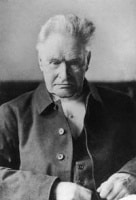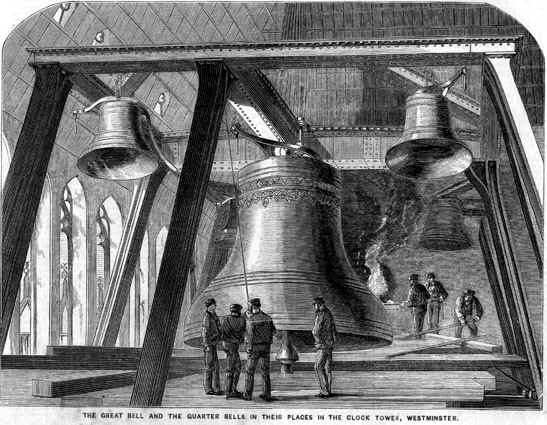As the General Election looms and the thoughts of the nation turn, however reluctantly, to Westminster, we can be certain that we’re going to see the most distinctive feature of the Houses of Parliament, the clock that we’re not supposed to call Big Ben, ever more regularly on our TV screens and newspapers. The engineer who designed that clock, and the mechanism that produces its evocative chimes, was Edmund Beckett Denison, later raised to the House of Lords as the first Lord Grimthorpe, whose brief obituary appeared in The Engineer.

For our predecessors, Grimthorpe was notable for his clock making: he revolutionised the building of large public clocks. He invented a system that more or less eliminated friction in the clock’s escapement — the component of the mechanism that converts the oscillation of the pendulum into the rotation of the escape wheel, the largest of the clock movement’s gears. Previously, large pendulum clocks, such as those in churches, used a system called a remontoire escapement, which used a secondary source of power — a small weight or spring — to drive the clock’s escape wheel. Every half-minute, the clock’s pendulum mechanism winds up this secondary power source, so the clock’s arms — which would be very large, heavy and liable to be caught by the wind — are isolated from the movement of the pendulum and vice-versa.
Grimthorpe took that idea further. He devised a system of suspended weights placed on either side of the pendulum rod, placed so that one of the weights was always “elevated in advance of the rising pendulum”. In falling, it helped the pendulum to return to the other side of its arc, ensuring that the pendulum always had exactly the same driving effect. “The mechanism is exceedingly simple; it is very easy to make and need not be very accurate,” The Engineer said. “Clocks fitted with it are therefore splendid timekeepers.”
Grimthorpe seems to have been quite a character. Born in 1816 into a political family — his father was MP for the West Riding of Yorkshire — he studied maths at Trinity College, Cambridge, and then became a barrister, specialising in ecclesiastical law. However, it was as an architect and engineer that he made his biggest impact. In the 1880s and 1890s he rebuilt much of St Albans Cathedral, in a style that made him somewhat unpopular in some circles: the verb ‘to grimthorpe’ was coined, meaning to restore an ancient building unsympathetically. He apparently once said: “The only architect I have never quarrelled with is myself.”

The Engineer mentions that he was a “controversialist” and “notorious as a fighter”, but adds that “even his rampant dogmatism was not without charm”. Presumably at the time readers would have known what that referred to; unfortunately it’s now lost in time and we can’t find any other references. This should warn us that we should never assume that what makes someone famous now is what they will be remembered for!
Grimthorpe designed the Westminster clock in 1851; he was elected to the Royal Astronomical Society in 1866, the same year that he received his peerage, and two years later was elected president of the British Horological Institute on the condition that he wasn’t asked to attend dinners. We can only speculate whether it was the quality of the food or the company that he objected to, but he was re-elected every year until his death. He wrote several works on clocks and watches, including entries in the Encyclopaedia Britannica; was an authority on bells, bell-hanging and ringing; and was thought the best locksmith in England.





Nanogenerator consumes CO2 to generate electricity
Whoopee, they've solved how to keep a light on but not a lot else.